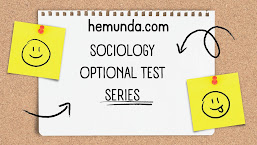Diabetes Mellitus
Definition-Diabetes Mellitus is a chronic metabolic disorder that prevents the body to utilize glucose completely or partially.
- It characterized by raised glucose concentration in blood and alternations in carbohydrate, protein, and fat metabolism.
- This can be due to failure in formation or liberation or action of insulin.
Types of Diabetes Mellitus
A. Type-1 Diabetes Mellitus i.e Insulin-dependent Diabetes Mellitus.
B. Type-2 Diabetes Mellitus i.e Non-Insulin-dependent Diabetes Mellitus.
Note- Insulin is secreted by the ẞ-cells of islets of Langerhans of the pancreas. Its function is to carry insulin to the body cells.
Other types of Diabetes Mellitus
1.Genetic defects of ẞ-cells function.
2.Genetic defects of insulin action.
3.Diseases of Endocrine pancreas
4.Endocrinopathies
5.Drug or chemical induced.
6.Gestational Diabetes.
Aetiology (Study of causes of diseases)
Type-1 Diabetes Mellitus
1. Genetics- HLA class-II genes
2. Infection- Coxsackie/other viruses.
3. Acute stress, physical injury, surgery, distress, etc.
4. Immunological factor- Autoimmune disorder.
5 . Uncommon in nature.
Type-2 Diabetes Mellitus
1. Lifestyle- Obese, sedentary, over-eating
2. Age>45 yrs
3. Abdominal fat.
4.Pregnancy
5. Common in nature
Symptoms
1. Hyperglycaemia-Glucose increases in blood.
2. Glycosuria-Excess Glucose in the urine.
3. Fluid Electrolyte imbalance.
4. Acidosis.
5. Polyuria(excess urination), Nocturia(excess urination in night).
6. Polydipsia (excess thirst) and Polyphagia (excess hunger)
7.Dehydration
8.Fatigue, Weight loss, Hypothermia(feeling cold), Hypotension.
9.Increased excretion of K, Mg, and Phosphorus.
Dietary Management:
Diet of Diabetic patient is prescribed in terms of Exchange lists which are a group of measured foods of the same caloric value and a similar protein, fat, and carbohydrate and can be substituted one for another in a meal plan.
1. Energy- 25 Kcal /Kg Bodyweight for Hospitalised patients.
2. Carbohydrate- 45-60 % of total calories.
- Given in the form of polysaccharides like whole grains.
- Avoid sweets, chocolates, sweetened drinks that are rapidly absorbed.
3. Protein- High Protein- 10-35 % of total intake is good.
- It helps in tissue repair by essential amino acids.
- In type-II Diabetes Mellitus, lowers the blood glucose concentration.
- In the case of Hyperglycaemia, >0.8gm/Kg of body weight.
4. Fat- Low-fat diet i.e 15-25 % of total calories
- Higher in PUFA(polyunsaturated fatty acid)
- Saturated fat <7 % of total calories.
5. Vitamins & Minerals- Diets rich in all types of vitamins, especially Vit-C&E.
- Antioxidants in fruits and vegetables.
-Magnesium and Zinc are encouraged.
- Vit-B12, Calcium, & Iron- Pregnant and lactating women.
6. High fiber diet- Fenugreek seeds, Vegetables, grains, legumes, etc.
Food Management:
1. Foods to be avoided
- Simple sugar (Glucose, Honey, Syrup, sweets, jaggery, sweetened juice)
- Dried foods, cake & candy.
- Alcohol.
2. Foods to be taken in moderation
- Fat, meat, egg
- Cereals, pulses
- Nuts, roots, fruits.
- Artificial sweetener
3. Foods permitted
- Green Leafy Vegetables, fruits except for bananas.
- Lemon, Onion
- Clear Soups
- Spices, salad, Mint.
- Plain Tea and Coffee.
- Skimmed & Butter Milk.
Note- Avoid Fasting and Feasting.
Previous years' Questions from this topic.
1. Write the classification of diabetes mellitus, its causes, symptoms, diagnosis, and dietary management. (30 marks)-2019
2. Explain the causes, symptoms, and principles of dietary management of diabetes mellitus. (20 marks)- 2018
3. What is diabetes mellitus? What factors do you consider in planning a diet for an insulin-dependent juvenile diabetic? (20 marks)-2011
4. Write about the nature and complications of Diabetes. Discuss how diabetes can be controlled through diet. (60 marks)-2000
Note- This is a topic of the therapeutic nutrition chapter of section A of Paper-1 (Home Science). I will keep on writing on other topics with previous years' questions asked from that topic. So that it will be easier for you to understand the depth of the questions and the level of your preparation. Plz Guys, let me know if you like this or not, otherwise, I won't get the motivation to write further.







































4 Comments
Thank you
ReplyDeletePlease continue the home science series
ReplyDeleteSuperb fabulous excellent explanation Sir
ReplyDeleteCarry on with solutions all previous question...Thanks a lot
I want to purchase it series.
Join my WhatsApp content mailing program for Home Science.
ReplyDeleteFor details scroll the side bar of this web page.
Thanks a lot A kumar.
It will be my previlege to help you in your preparation.
please do not enter any spam link in the comment box.